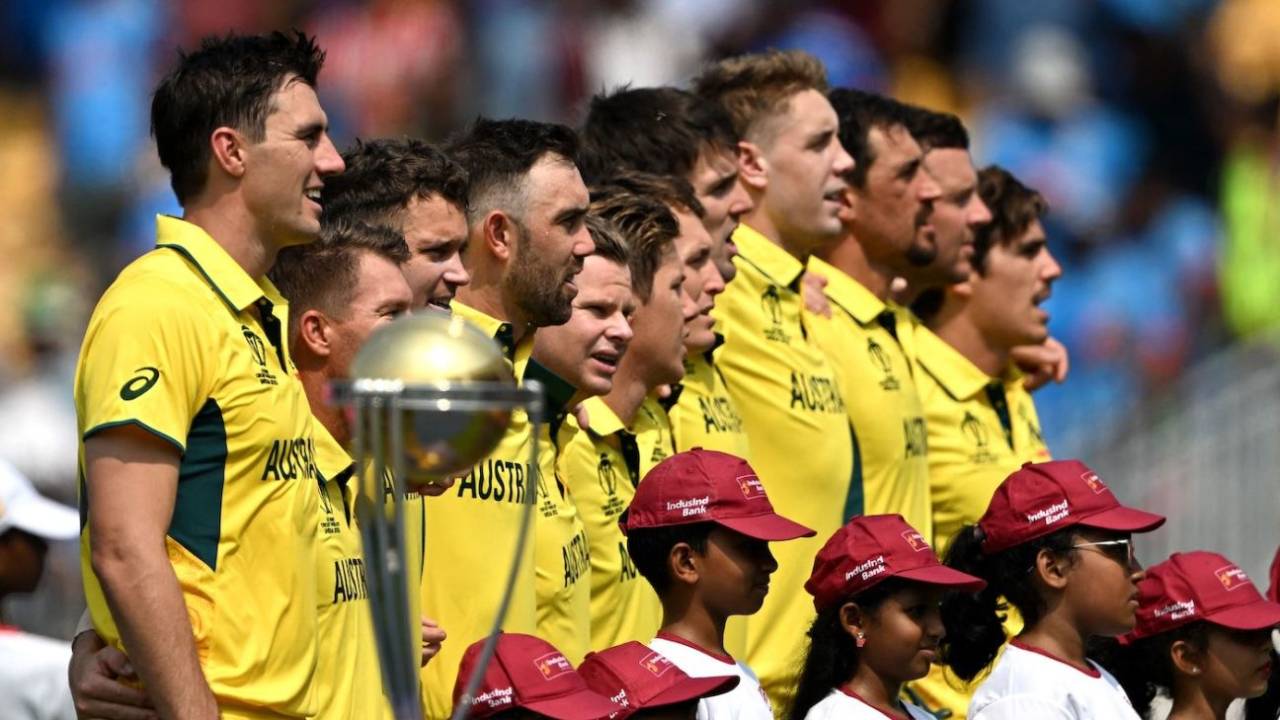Australia have won eight matches in a row to reach yet another World Cup final. It has been a remarkable turnaround after a disastrous lead-in to the tournament and a poor start to the campaign itself. They had lost five of their last six ODIs heading into the event and were comprehensively beaten in their opening two matches of the tournament itself. They have managed to turn it around in stunning fashion, thanks to some amazing individual performances and a couple of incredible selection gambles. Here is how it has all come together.
Problematic preparation and early losses
Australia's start to the tournament could not have been worse. Having lost three games to South Africa and two more to India to lose back-to-back series in the lead-in to the tournament, nothing was going right.
They limped to
199 in the opening game against India. There was a moment where they could have had India 20 for 4, but Mitchell Marsh dropped Virat Kohli and India cruised to victory.
Against South Africa they were annihilated, conceding 311 for 7 and making just 177 in reply. Australia's tournament looked all but over when Sri Lanka cantered to
125 without loss after 21 overs in their third game in Lucknow.
Zampa, Cummins, Warner and Marsh spark them to life
It took four players to spark the turnaround, but the transformation was swift and startling. Cummins bowled a spell that breathed life into his side, removing Sri Lanka's two openers. Zampa then got to work. Having been hampered by shoulder and neck issues, all while battling illness, he shook them off and showed why Australia's selectors had faith that he could carry the spin load just as he did in the 2021 T20 World Cup. Zampa went on a tear taking four wickets in three consecutive games. He then became the first player in ODI World Cup history to take three wickets or more in five consecutive games.
Even while Australia's quicks had trouble making inroads in the first powerplay, Zampa consistently pulled games back for them. He has 22 wickets in this tournament which is a significant achievement. Only
Muthiah Muralidaran has taken more as a spinner in an ODI World Cup.
David Warner also played his part in the turnaround in both the field and with the bat. He first took two exceptional catches in the outfield off Cummins and Zampa against Sri Lanka to snap Australia out of their uncharacteristic fielding malaise. He and Marsh then sprung to life with the bat.
Head gamble pays dividends
Picking Head in the 15-man squad when he was unavailable for Australia's first five games due to a broken hand could have been a disastrous gamble if Australia had not recovered from their first two losses. But even having done so, the form of the Warner-Marsh combination at the top of the order and the fact that Australia had scored 350-plus in consecutive games did spark some different questions when Head finally returned.
Smith made his displeasure about shifting to No. 4 known while Marsh would have also preferred to remain at the top. But Head proved why the selectors had
shown faith in him in his first game back, smacking a stunning 59-ball century against New Zealand in a vicious assault with Warner. Australia's long-term plan to pulverize their opponents in the powerplay with the use of three power-hitters in Head, Warner and Marsh was back in place. However, it did take a little while to gel properly.
Marsh had trouble readjusting to life at No. 3 against New Zealand and then missed the match against England due to the death of his grandfather. Head missed out several times as the top order misfired
against Afghanistan. But it finally clicked
against Bangladesh. Head fell cheaply again but Marsh picked up the slack with a thumping 177 not out. Then in the
semi-final, in a low-scoring game on a tricky pitch, Head proved again why his role is so vital, picking up two crucial wickets with the ball and then putting Australia ahead of the game with a blistering half-century that allowed some room for a middle-order wobble.
The Big Show's biggest show
The fastest century in World Cup history was not enough for Maxwell. He somehow trumped his 40-ball century against the Netherlands with the greatest ODI innings of all-time against Afghanistan. Words can't do justice to his
201 not out off 128 balls. Australia were on 49 for 4 in the ninth over when Maxwell arrived at the crease in chase of 292. His epic innings sealed Australia's semi-final spot and proved that they can always find a way to win, given the quality of match-winners they possess.


